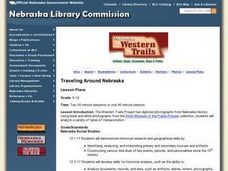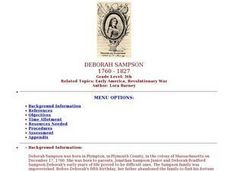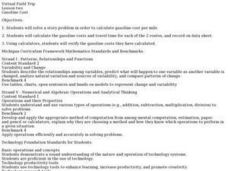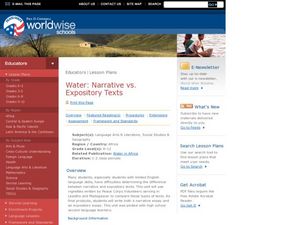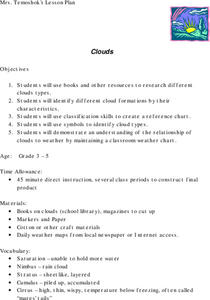Curated OER
Melodic Rhythms of India
Learners listen to and dance to the music of India. After listening to the music again, they identify the different types of instruments playing the melody. They explain the tabla tarang and view photographs of people performing the music.
Curated OER
Using Scholastic News to Introduce the Net
Third graders log on to the net, type in the address for Scholastic and browse the subjects for the week. They select one area of interest and generate five interesting facts about the article.
Curated OER
Where Did It Come From?
Pupils research island formation, plot locations on a map and make an analysis of why some islands are formed where they are.
Curated OER
ADULT ESOL LESSON PLAN--Level 5--Telephone Communication
Students, after reviewing/defining an extensive list of vocabulary terms on the board, examine/identify a variety of resources found in telephone directories (maps, government agencies, coupons, customer guide section, emergency numbers,...
Curated OER
Eating Your Words!
First graders study how to complete activities in sequential steps. They participate in various activities describing each step needed to complete the tasks. They work in pairs to type the list of steps necessary in making a sandwich. ...
Curated OER
Dividing the Philanthropic Shares
Students define who volunteers are the and the types of jobs that they do. They identify various groups who volunteer in their community, and locate them on a city map.
Curated OER
Traveling Around Nebraska
Students analyze a current or historical photograph from their textbook and as a class complete a worksheet of the analysis. Using the Photographic Analysis Form, they locate and analyze two transportation photographs and use the...
Curated OER
Creative Expressions: Making Puppets
Students are introduced to the very basic geography of Indonesia. In groups, they examine the different types of puppets and decide on which one to make. They travel between various stations to complete their puppet in which they use...
Curated OER
Visiting the Arctic Circle
Students familiarize themselves with the Arctic Circle by locating it on a globe and wall map. They discuss they climate in the North Pole and the reasons for its low temperatures. They compare and contrast the climates of the Arctic...
Curated OER
About to Explode
Students explore Mount St. Helens' quiet eruption of 2004-2005. They examine different types of eruptions and then present creative first-hand accounts of different volcanic eruptions in history.
Curated OER
Bridging the Gap
Students explore the role that bridges play in our society. They conduct an investigation to examine the various shapes and functions of bridges. They determine which type of bridge would best suit a given scenario.
Curated OER
Hyperlink Habitats
Students explore a series of Web pages designed to illustrate the interconnectedness of a tropical rainforest ecosystem. They discuss their research, create maps and research a local ecosystem.
Curated OER
Color My World
Fourth graders write poems using color to describe their feelings and environment. After viewing a sample student poem imbedded in this plan, 4th graders utilize The Student Writing Center educational software program to type their poem.
Curated OER
Deborah Sampson
Fifth graders describe the major accomplishments of Deborah Sampson and her importance in American history. They list in chronological order the evets that took place in Deborah Sampson's life. They demonstrae their ability to...
Curated OER
Virtual Field Trip/ Gasoline Cost
Students complete a word problem to determine the cost of gasoline per mile of their virtual field trip. They determine the travel time and gasoline costs for two routes and record the information on a data sheet. They check their work...
Curated OER
Will It Rain Today or Tomorrow?
Students examine how to forecast weather. They examine the different types of weather and learn the correct vocabulary.
Southern Nevada Regional Professional Development Program
Pardon Me, Your Modifier is Dangling
Lost! (or misplaced) a modifier. Last seen dangling at the end of a sentence! Reward offered! To underscore the humor, class members are each given a sample sentence to illustrate (A woman passed by, leading a Springer Spaniel, in a...
Curated OER
Water: Narrative vs. Expository Texts
A reading of vignettes written by Peace Corps Volunteers serving in Lesotho and Madagascar launches a study of the difference between narrative and expository texts. As final products, young writers craft both a narrative and an...
Curated OER
Plate Tectonics & Land Forms
Fourth graders discuss the different interactions of plates and the ways mountains are created. In this plate tectonics lesson plan students complete an activity in groups.
Curated OER
Edgar Allan Poe's "The Cask of Amontillado"
After reading "The Cask of Amontillado" by Edgar Allan Poe, use the SMART board file to learn about Poe's background and use of irony. The lesson includes resource links to additional websites, as well as the SMART board file (you...
Discovery Education
Sonar & Echolocation
A well-designed, comprehensive, and attractive slide show supports direct instruction on how sonar and echolocation work. Contained within the slides are links to interactive websites and instructions for using apps on a mobile device to...
Curated OER
Come Into my Parlor
An interesting cross-curricular lesson plan on dairy farming awaits your students. Elements of language arts, math, social studies, and agriculture are all present. Many excellent worksheets and a good article on dairy farming are...
Curated OER
Character Traits: Yang the Youngest and His Terrible Ear
Lensey Namioka’s Yang the Youngest and His Terrible Ear provides an opportunity for young readers to observe how writers bring their characters to life. Each class member selects a character to trace through the novel, recording...
Curated OER
Clouds
Students explore the characteristics of clouds, their formation, symbols used in their identification, and the relationship of clouds to weather. The lesson focuses on how they are formed and their classification.






